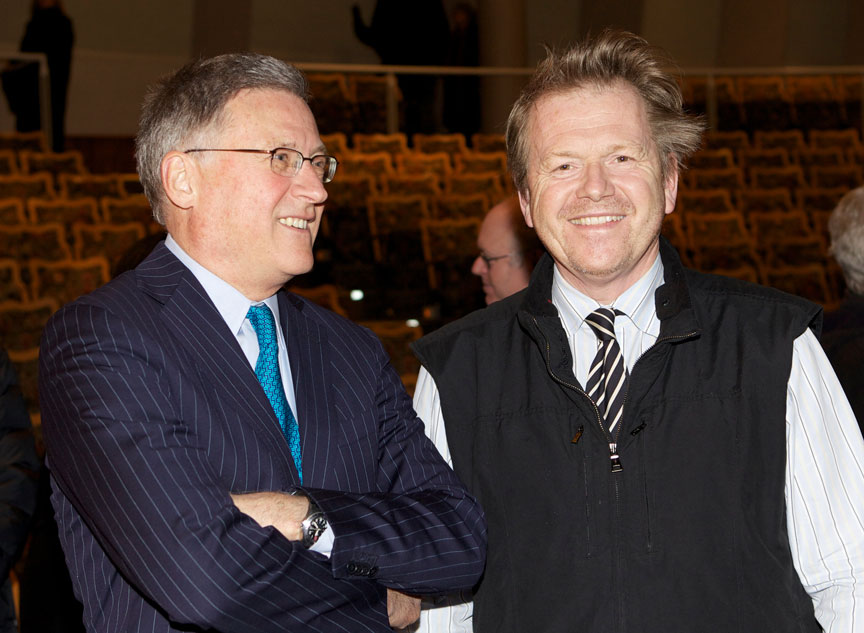Annual Garden Lecture Series
Posted in Gardening Tips on February 1 2011, by Plant Talk
 Two weeks ago our intellect and imagination was stimulated by the first in our three part Annual Winter Lecture Series. The Thursday morning lecture series (from 10am – 12pm) is entitled ‘Explore Your Greener Side’. The monthly lectures are scheduled for (January 20), February 17 and March 17.
Two weeks ago our intellect and imagination was stimulated by the first in our three part Annual Winter Lecture Series. The Thursday morning lecture series (from 10am – 12pm) is entitled ‘Explore Your Greener Side’. The monthly lectures are scheduled for (January 20), February 17 and March 17.
The sessions begin with a brief opening talk that translates into an amuse-bouche for the main speaker. The opening remarks in January were given by Eric Sanderson, author of Mannahatta. Sanderson blends intellect, charisma and a down-to-earth quality into an infectious mix. He spoke of the social and environmental/ecological choices that we have when planning the future of our city.
Sanderson takes what seems like an impenetrable urban environment and revitalizes it by giving us insight into what it must have looked like before the concrete jungle was erected. He provides city planners, landscape architects and visionaries with the raw materials to embrace and recreate the natural landscape; challenging us to change how we think about the urban environment.
Our featured speaker in January was the renowned urban landscape architect, Michael Van Valkenburgh (pictured, with New York Botanical Garden president Grerory Long). Van Valkenburgh started with the premise that ‘ecology and cultural situations are intimately connected these days’. While it can be tempting to separate ecology from urban development – more forward thinking landscape architects and city planners are integrating the two.
Van Valkenburgh took us through the life of a high powered landscape architect. There were stories of consulting with experts in different fields from engineering and technology to experts in native habitats
I would like to share with you some pieces of his philosophy that I think we can all learn from. In the first project that he presented, Tear Drop Park in Battery Park City, he spoke of the challenging site conditions and the emphasis that his firm placed on working within environmental constraints.
In the enclosed urban space light levels were restricted. The level of light in certain areas of the park determined the design decisions. Rather than working through or around problems the design teams let the light levels take the lead and determine whether an area was lawn, shade-loving understory trees or hardscape (terraces, walls, rockscapes).
Maintenance was intimately connected to the vision of the landscape and the designers not only created a plan that was practical but one that would also evolve smoothly over time. Van Valkenburgh made the analogy between buying a puppy and raising a dog. Landscape architecture needed to plan for the ever-changing long-term commitment.
Throughout his talk and the various projects that he covered – Teardrop Park, Brooklyn Bridge Park, Princeton University and a pharmaceutical company in New Jersey – Van Valkenburgh focused on working in an ecological fashion with the space. He reinforced how microclimates that dictated the constraints in the design could be worked to our advantage.
Nature is dynamic. He spoke of the role that managed succession played in the design of Brooklyn Bridge Park. Fast, showy growers such as sumac (Rhus) were placed amongst slow growing oaks (Quercus) that would eventually shade them out. Nature had her natural rhythms and cycles and the ecologically minded landscape architect could work with them.
In another project site, Van Valkenburgh talked about the careful decisions that were involved in choosing the plant palette. He looked at the phenological cycles of the trees that he selected for his design – paying attention to the different times that the trees leafed out in the spring and the sequence and timing of their fall color and defoliation. These were all important decisions in shaping or creating the landscape.
One theme that ran through the lecture was the concept of seeing the landscape at different levels. Seasonality and managed succession were just two ways of seeing the landscape in a fluid manner throughout time. Scale and topography were other ways in which the multifaceted landscape was viewed.
Van Valkenburgh addressed both the importance of obstructing unwanted views (and gave some wonderfully inspiring example such as the ‘Mohawk-shaped’ berm at Brooklyn Bridge Park) and the importance of appropriate or restrained scale that allows for borrowed landscapes and creates a sense of space.
The lecture was rich in ideas and innovations. On February 17th we look forward to joining garden guru Colston Burrell for his lecture on Native Plants and Ecological Design.

